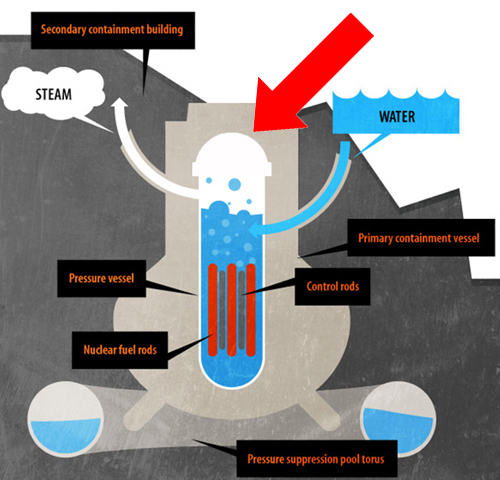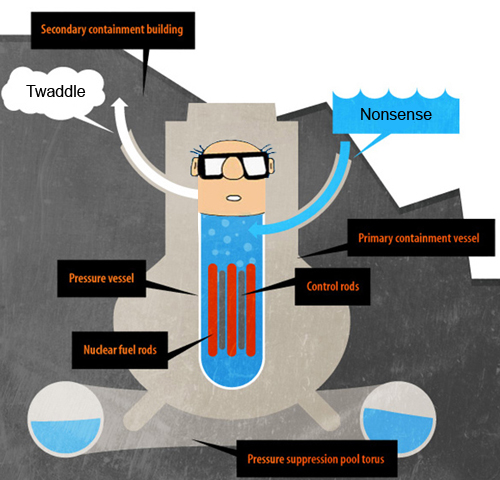For the search terms “worst case, Fukushima,” Google returns the same very short story from “experts” all over the world.
And here’s the official story from the Chief Scientific Officer of the entire United Kingdom, Professor John Beddington!
Let me now talk about what would be a reasonable worst case scenario. If the Japanese fail to keep the reactors cool and fail to keep the pressure in the containment vessels at an appropriate level, you can get this, you know, the dramatic word “meltdown”. But what does that actually mean? What a meltdown involves is the basic reactor core melts, and as it melts, nuclear material will fall through to the floor of the container. There it will react with concrete and other materials … that is likely… remember this is the reasonable worst case, we don’t think anything worse is going to happen. In this reasonable worst case you get an explosion. You get some radioactive material going up to about 500 metres up into the air. Now, that’s really serious, but it’s serious again for the local area. It’s not serious for elsewhere even if you get a combination of that explosion it would only have nuclear material going in to the air up to about 500 metres.
So if only we can persuade all those melting reactors to behave reasonably, like an official scientist, then even the worst case isn’t “serious for elsewhere!”
Hurrah!
And likewise at Scientific American, where “Nuclear Experts Explain Worst-Case Scenario at Fukushima!”
And just what is that worst-case scenario? “They’re venting in order to keep the containment vessel from failing. But if a core melts, it will slump to the bottom of the reactor vessel, probably melt through the reactor vessel onto the containment floor. It’s likely to spread as a molten pool-like lava-to the edge of the steel shell and melt through. That would result in a containment failure in a matter of less than a day.”
Containment failure! And that’s the end of the SciAm story! They don’t even get as far as the Official Chief Scientific Officer, who mentioned a relatively small explosion, which wouldn’t be much of a problem outside the the immediate environs of Fukushima Prefecture.
But we might also ask ourselves how accurate all those “nuclear experts” have been so far.
Are they getting it right, or getting it wrong, and how far wrong?
For example, when they sent a couple of engineers wading into radioactive water at Fukushima #2 just a couple of days ago, how far wrong were the “nuclear experts” about how much radioactivity thoise unfortunate waders would encounter?
They were wrong by a factor of 10,000!
The real situation was ten thousand times worse than their reasonable prediction!
So maybe we should ask a few common-sense questions about the reassuring official story, such as…








